-
BackX
-
Components
-
-
Category
-
Semiconductors
- Diodes
- Thyristors
-
Electro-insulated Modules
- Electro-insulated Modules | VISHAY (IR)
- Electro-insulated Modules | INFINEON (EUPEC)
- Electro-insulated Modules | Semikron
- Electro-insulated Modules | POWEREX
- Electro-insulated Modules | IXYS
- Electro-insulated Modules | POSEICO
- Electro-insulated Modules | ABB
- Electro-insulated Modules | TECHSEM
- Go to the subcategory
- Bridge Rectifiers
-
Transistors
- Transistors | GeneSiC
- SiC MOSFET Modules | Mitsubishi
- SiC MOSFET Modules | STARPOWER
- Module SiC MOSFET ABB’s
- IGBT Modules | MITSUBISHI
- Transistor Modules | MITSUBISHI
- MOSFET Modules | MITSUBISHI
- Transistor Modules | ABB
- IGBT Modules | POWEREX
- IGBT Modules | INFINEON (EUPEC)
- Silicon Carbide (SiC) semiconductor elements
- Go to the subcategory
- Gate Drivers
- Power Blocks
- Go to the subcategory
- Electrical Transducers
-
Passive components (capacitors, resistors, fuses, filters)
- Resistors
-
Fuses
- Miniature Fuses for electronic circuits - ABC & AGC Series
- Tubular Fast-acting Fuses
- Time-delay Fuse Links with GL/GG & AM characteristics
- Ultrafast Fuse Links
- Fast-acting Fuses (British & American standard)
- Fast-acting Fuses (European standard)
- Traction Fuses
- High-voltage Fuse Links
- Go to the subcategory
- Capacitors
- EMI Filters
- Supercapacitors
- Power surge protection
- TEMPEST emission revealing filters
- Surge arrester
- Go to the subcategory
-
Relays and Contactors
- Relays and Contactors - Theory
- 3-Phase AC Semiconductor Relays
- DC Semiconductor Relays
- Controllers, Control Systems and Accessories
- Soft Starters and Reversible Relays
- Electromechanical Relays
- Contactors
- Rotary Switches
-
Single-Phase AC Semiconductor Relays
- AC ONE PHASE RELAYS 1 series| D2425 | D2450
- One phase semiconductor AC relays CWA and CWD series
- One phase semiconductor AC relays CMRA and CMRD series
- One phase semiconductor AC relays - PS series
- Double and quadruple semiconductor AC relays - D24 D, TD24 Q, H12D48 D series
- One phase semiconductor relays - gn series
- Ckr series single phase solid state relays
- One phase AC semiconductor relays for DIN bus - ERDA I ERAA series
- 150A AC single phase relays
- Rail Mountable Solid State Relays With Integrated Heat Sink - ENDA, ERDA1 / ERAA1 series
- Go to the subcategory
- Single-Phase AC Semiconductor Relays for PCBs
- Interface Relays
- Go to the subcategory
- Cores and Other Inductive Components
- Heatsinks, Varistors, Thermal Protection
- Fans
- Air Conditioning, Accessories for Electrical Cabinets, Coolers
-
Batteries, Chargers, Buffer Power Supplies and Inverters
- Batteries, Chargers - Theoretical Description
- Modular Li-ion Battery Building Blocks, Custom Batteries, BMS
- Batteries
- Battery Chargers and Accessories
- Uninterruptible Power Supply and Buffer Power Supplies
- Inverters and Photovoltaic Equipments
- Energy storage
- Fuel cells
- Lithium-ion batteries
- Go to the subcategory
-
Automatics
- Spiralift Lifts
- Futaba Drone Parts
- Limit Switches, Microswitches
- Sensors, Transducers
-
Infrared Thermometers (Pyrometers)
- IR-TE Series - Water-proof Palm-sized Radiation Thermometer
- IR-TA Series - Handheld Type Radiation Thermometer
- IR-H Series - Handheld Type Radiation Thermometer
- IR-BA Series - High-speed Compact Radiation Thermometer
- IR-FA Series - Fiber Optic Radiation Thermometer
- IR-BZ Series - Compact Infrared Thermometers
- Go to the subcategory
- Counters, Time Relays, Panel Meters
- Industrial Protection Devices
- Light and Sound Signalling
- Thermographic Camera
- LED Displays
- Control Equipments
- Go to the subcategory
-
Cables, Litz wires, Conduits, Flexible connections
- Wires
- Cable feedthroughs and couplers
- Litz wires
- Cables for extreme applications
- Sleevings
-
Braids
- Flat Braids
- Round Braids
- Very Flexible Flat Braids
- Very Flexible Round Braids
- Cylindrical Cooper Braids
- Cylindrical Cooper Braids and Sleevings
- Flexible Earthing Connections
- PCV Insulated Copper Braids (temp. up to 85C)
- Flat Aluminium Braids
- Junction Set - Braids and Tubes
- Steel Braids
- Go to the subcategory
- Traction Equipment
- Cable Terminals
- Flexible Insulated Busbars
- Flexible Multilayer Busbars
- Cable Duct Systems
- Go to the subcategory
- View all categories
-
Semiconductors
-
-
- Suppliers
-
Applications
- CNC Machine Tools
- DC and AC Drives (Inverters)
- Energetics
- Energy bank
- Equipment and Components for Hazardous Areas [Ex]
- Equipment for Distribution, Control and Telecommunications Cabinets
- HVAC Automation
- Induction Heating
- Industrial Automation
- Industrial Protective Devices
- Machines for Drying and Wood Processing
- Machines for Thermoforming Plastics
- Mining, Metallurgy and Foundry
- Motors and Transformers
- Power Supplies (UPS) and Rectifier Systems
- Printing
- Temperature Measurement and Regulation
- Test and Laboratory Measurements
- Tram and Railway Traction
- Welding Machines
-
Assembly
-
-
Inductors
-
-
Induction devices
-
-
Service
-
- Contact
- Zobacz wszystkie kategorie
Control Cabinet – How to Design Structures Resistant to Industrial Conditions?

A control cabinet is a key element of industrial infrastructure, housing electrical and electronic devices responsible for controlling production processes. Inside the cabinet are instruments, controllers, relays, and actuating modules that form part of the control system. Thanks to proper design and assembly, the control cabinet ensures work safety, system reliability, and compliance with standards applicable in industrial automation.
Control system and industrial requirements
The control system in automation must meet the rigorous requirements of Industry 4.0, ensuring process stability, eliminating downtime, and enabling remote device control. Control cabinets are no longer just enclosures but form part of an integrated system that combines equipment, wiring, power supply modules, and cooling systems.
Cabinet enclosure – design resistant to environmental conditions
The control cabinet enclosure should be designed with resistance to industrial conditions in mind: moisture, dust, vibrations, and variable temperatures. The IP protection rating and mechanical parameters must meet customer requirements and the specifics of the electrical installation. In industrial automation, protecting the inside of the cabinet is essential to ensure that electrical and electronic devices operate reliably over the long term.
Prefabrication of control cabinets
Control cabinet prefabrication is a process that includes design, component selection, assembly, and functional testing. Each control cabinet should be designed for a specific electrical installation and control system requirements. Prefabrication requires compliance with IEC standards and attention to detail in both mechanical and electrical construction.
Assembly and installation – key elements of reliability
Assembly of a control cabinet includes arranging modules, busbars, inverters, circuit breakers, and controllers. Proper cable layout, wire fastening, and the use of terminals ensure safety and system reliability. Installation should be carried out according to project documentation, minimizing the risk of short circuits and enabling maintenance during operation.
Designing a control cabinet – key principles
To design a control cabinet resistant to industrial conditions, the engineer should consider:
- compliance with standards (IEC, IP protection rating),
- analysis of electrical parameters, such as supply voltages and operating currents,
- selection of a cooling system (fan, air conditioner, low-power heaters),
- mechanical resistance of the enclosure,
- possibility of future expansion of the system.
The cabinet design should be both compact and ensure proper airflow inside to prevent overheating.
Documentation and IEC standards
Design documentation is the foundation of control cabinet prefabrication. It must include electrical installation diagrams, component specifications, and a description of the standards to be followed. Compliance with IEC standards and IP protection requirements ensures that the control cabinet meets safety and reliability expectations in demanding industrial environments.
Cooling systems and temperature control inside the cabinet
Internal cabinet temperature is critical for the operation of electrical devices. The design should therefore include cooling systems such as fans, air conditioners, or low-power heaters. This helps prevent equipment from overheating and maintains stable airflow. In industrial automation, cooling systems support reliability and reduce downtime caused by thermal failures.
Safety and reliability of the control cabinet
Safety is one of the fundamental requirements in the design and prefabrication of control cabinets. A properly constructed enclosure, protection against short circuits, compliance with standards, and serviceability guarantee system reliability. Electrical cabinets must be resistant to mechanical damage, moisture, and other external factors so that the control equipment can operate without interruptions.
Equipment and components inside the cabinet
Inside the control cabinet are various elements such as controllers, relays, inverters, communication modules, and circuit breakers. Each component must be properly selected for the installation parameters and mounted in compliance with safety requirements. The engineer responsible for prefabrication should ensure an optimal layout that allows easy maintenance and servicing.
Industrial design – environmental resistance
Control cabinets used in Industry 4.0 must be designed for extreme operating conditions. IP protection, resistance to moisture and dust, mechanical stability, and proper cable insulation are essential to maintaining continuous production processes. In modern industry, control cabinets not only manage processes but also communicate with telecommunications systems and automation infrastructure.
Maintenance and servicing of control cabinets
Maintenance and regular servicing of control cabinets are key to long-term reliability. During operation, it is necessary to check the condition of wires, fastenings, internal temperature, and cooling system performance. This helps prevent failures, downtime, and production losses.
Summary – how to design a cabinet resistant to industrial conditions?
Designing control cabinets requires a comprehensive approach – from compliance with IEC standards, through analysis of customer requirements, to prefabrication and assembly of equipment. Enclosures and control cabinets must withstand harsh industrial conditions, ensuring electrical installation safety and control system reliability. In practice, this means integrating proper design, suitable components, and effective cooling systems.
We invite you to explore our offer, which includes solutions tailored to industrial needs. Contact us to select a control cabinet perfectly suited to your installation requirements.
Related products
Related posts
 Thermally conductive materials in power storages
Thermally conductive materials in power storages
 Measuring power and energy in electric circuits
Measuring power and energy in electric circuits
 Wentylatory przemysłowe - rodzaje, właściwości
Wentylatory przemysłowe - rodzaje, właściwości

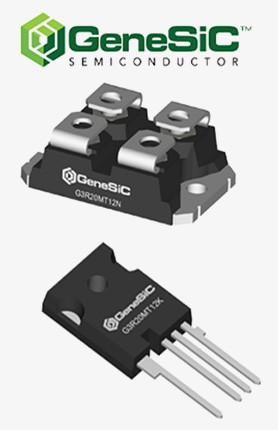
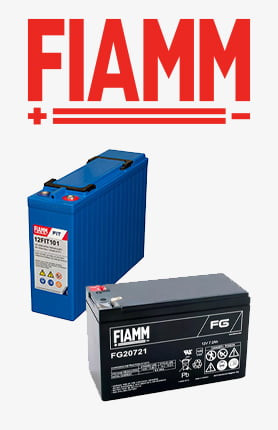
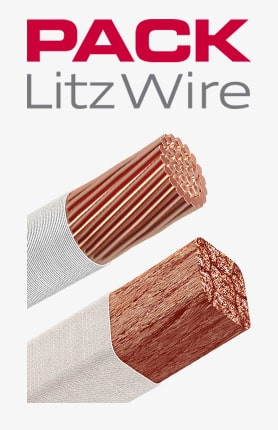
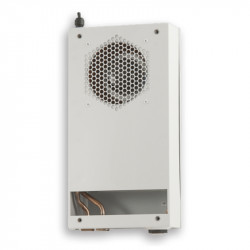
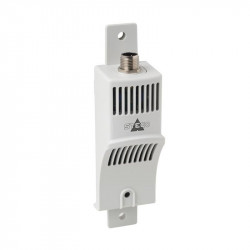
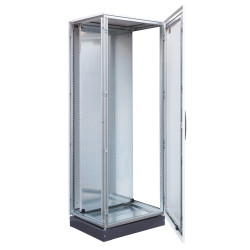


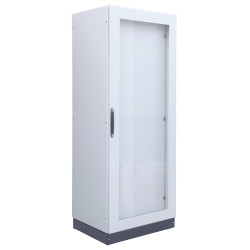
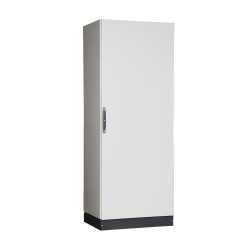
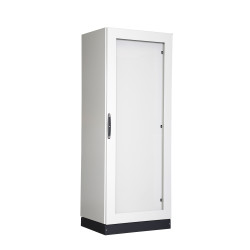
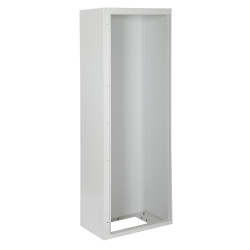
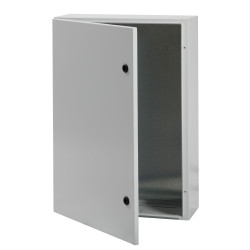
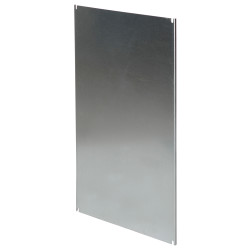
Leave a comment